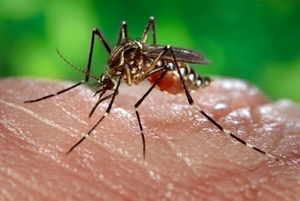13 March 2014. Biologists at University of Notre Dame in Indiana are evaluating area-wide techniques for repelling mosquitoes as a way to control diseases like malaria and dengue fever. A grant of $23 million from the Bill & Melinda Gates Foundation is funding a five-year project on spatial repellency methods led by biologists Nicole Achee and Neil Lobo in the university’s Eck Institute for Global Health. Notre Dame says the grant is the second-largest award for a single proposal in its history.
Spatial repellents seek to control mosquitoes by preventing contact between the insects and humans over an extended area, both indoors and outdoors. The repellents work in different ways, such as lowering the attraction of humans to mosquitoes and reducing the insects’ feeding responses. Personal chemical or physical repellents, such mosquito coils and bed nets, keep mosquitoes away from individuals or in limited spaces.
Achee, Lobo, and colleagues will generate data for decisions by global, regional, and local public health authorities on including spatial repellents in campaigns to control malaria and dengue fever. The university cites World Health Organization statistics indicating some 207 million cases of malaria reported worldwide in 2012, and 50 to 100 million dengue fever cases reported annually. Both diseases are spread by mosquito bites.
The Notre Dame studies will generate scientific evidence of the value of spatial repellent products in controlling mosquito-borne diseases, both as stand-alone techniques, and used with other control methods. When used with other methods, say the researchers, spatial repellents may help manage the spread of insecticide resistance, an issue of interest to agriculture as well as public health. Achee and Lobo will also prepare guidance for public health policy based on their findings.
In the following video, Achee and Lobo tell more about the spatial repellency project.
- DNA Diagnostics Company to Crowdfund Malaria Testing Device
- Lab-On-A-Chip Diagnoses Multiple Tropical Diseases
- Gates Foundation Funds, Invests in Tropical Disease Research
- Award Funds Malaria Drug Anti-Counterfeiting Technology
- AstraZeneca, NGO to Partner on Neglected Tropical Diseases
* * *


 RSS - Posts
RSS - Posts
You must be logged in to post a comment.